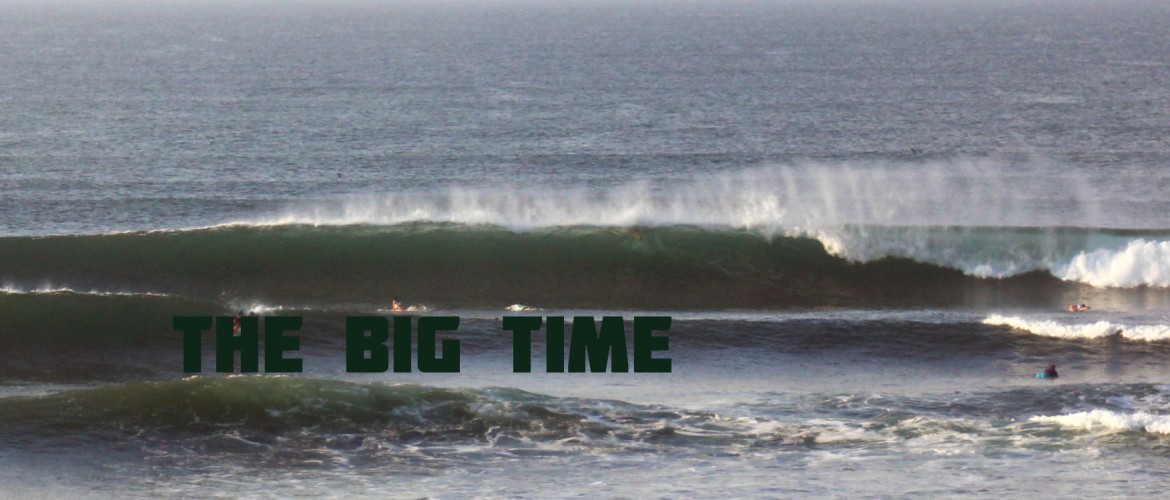Surf more challenging waves safely & confidently
www.onewavesurf.com
February 10, 2016
Sunset Reef, on the North Shore of Oahu is considered by many to be the most challenging wave in the world. Now this does not mean it is necessarily the gnarliest or hollowest – but instead – the most unpredictable, shifty, keep your head in the game like no other wave on the planet.
Standing on the beach, usually two or three football fields out to sea, Sunset looks like that access friendly point break you grew up with, so grab your board off the top of the family wagon and head on out; Not so fast! Looks can be deceiving and if this is your read on Sunset you are definitely being duped. During the early days of the North Shore surf era, Sunset held onto surfer’s imagination, and nightmares, much like the waves Pipeline, Teahupoo and Jaws do today.
The difficulty of Sunset lies in its massively wide playing field, strong rip currents, and constantly shifting peaks. The north Shore of Oahu is a wave magnet and Sunset is probably the most exposed spot. As such, Sunset tends to attract any and all swells in the water, the peaks shift with the overlapping swell angles and it’s common for Sunset to collect waves from multiple directions simultaneously. This not only means peaks far from each other in the lateral sense, but Sunset can shift from cool 5 foot sets into 10 foot beasts out the back without warning, catching the whole lineup like ants scrambling for safety.
The hold downs and lips smacks are no joke either. I have seen the lip heave a surfer 20 feet forward and then down. Then, the crushing force of the curl results in fierce hold-downs. The fun is not over after resurfacing either. The deep channels on each side of the Sunset ‘end-zones’ are often unreachable and create opposing currents, which suck surfers from the shallows right back to the impact zone for an unforgettable pounding. That’s all if you manage to hold onto your equipment in one piece. It takes a true waterman, or woman, to get back to shore after a leash gives or the wave snaps you board in two.
Still sounds like fun to you? There is a whole community of North Shore surfers who have dedicated their life to sorting the mayhem that is Sunset, so you can imagine how challenging it is for the freshman. For them, the Sunset challenge is worth every bit of the reward.
So why do I love this wave so much? Because it makes me a better surfer, every session!
Here is what I have learned over the years about approaching a more challenging wave.
- Check your equipment.
Do you have the right board? Do you have enough board for the conditions? Is your leash string fresh and the leash itself attaching properly. Is the Velcro firm? Are your fins all screwed down tight?
- Watch the wave and know what’s going on before you paddle out.
How big is it? What is it doing? Where is the channel? Where are the currents? How long are the sets?
- Knowledge is power.
Have you surfed this wave or even one similar to it at a smaller size before? Did you ask locals or a lifeguard what’s happening at the break? Do you know what the swell buoys are reading, wind patterns, tides and or any other conditions that are forecast which could affect your session?
- Embrace your limits.
Is it all too much? If it’s more than pushing the boundaries, are you going to be a danger to yourself or others? Do you have the mindset to do this? Can you duckdive your board deep or hold onto that log on the inside? Can you handle taking a full set on the head if you get caught out of position? In the event your equipment fails, could you swim back to the shore?
If this is not the case, ask someone if there is a more skill appropriate break just down the coast. You may find something even more worthwhile.
- Paddle out with confidence and surf with respect.
Are you ready to charge? If so, go with confidence and assurance that you know you are prepared, you have the right gear and you can handle yourself with poise out there!
When you paddle out, find the shoulder of the wave and stay there for at least two sets. It’s always more visceral up-close. Watch as long as you need to. Where is the best place to take off? Who is skillfully riding and what are they doing correct? Who is screwing up and what are they doing wrong? Decide if you want to catch waves from the shoulder, out back, the inside or straight at the peak? Can you catch a wave without hesitating in the critical moments? If you move to the inside, can you get out of the way of the surfers catching waves from the peak?
If it is just simply too much, there is no harm in paddling back to shore and coming back another time.
However, if you are ready for the challenge, show your respect for the ocean and the surfers around: You could end up stoked on the best wave of your life.
Mahalo.


